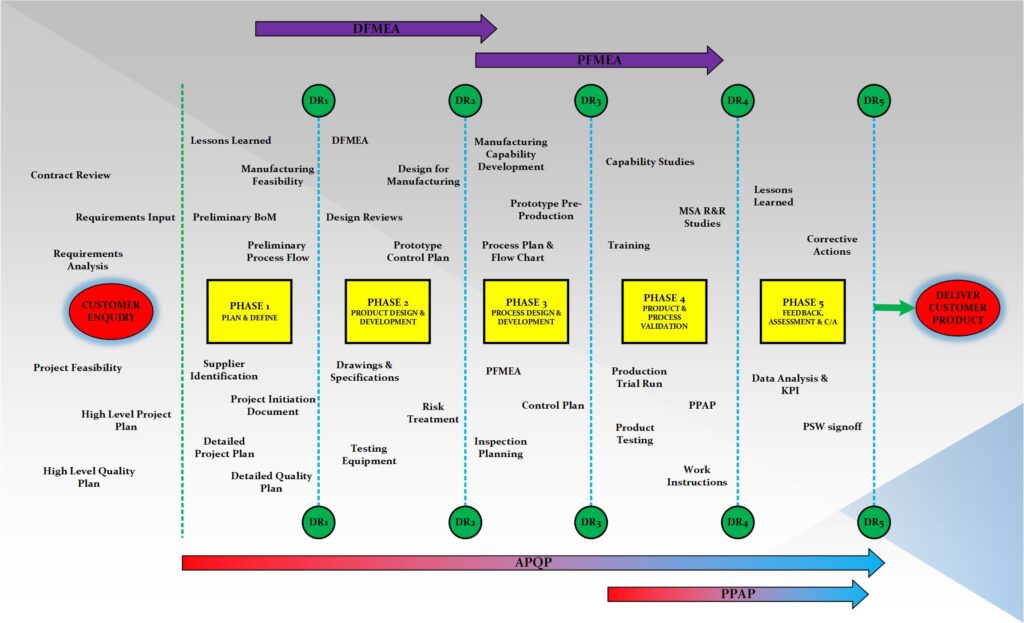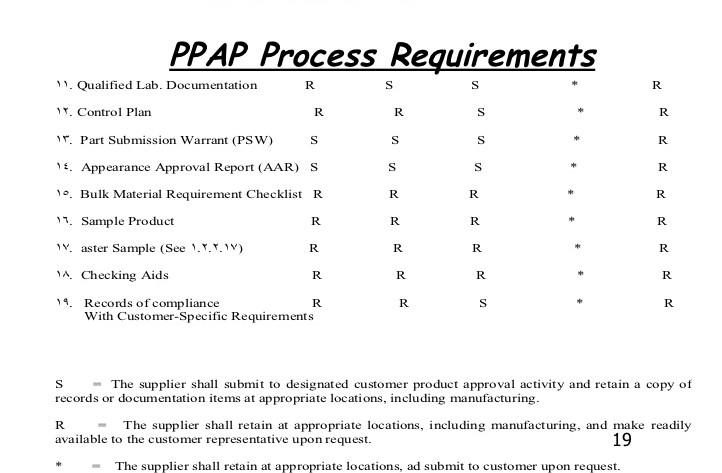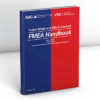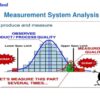Introduction to Production Part Approval Process (PPAP)
Production Part Approval Process (PPAP) is a valuable tool for establishing confidence in component suppliers and their production processes. In today’s competitive manufacturing environment controlling costs and maintaining a high level of quality have become vital to a company’s success. Increasing costs of equipment, materials, and labor combined with expanding world markets have increased from outsourced parts. Many parts are being outsourced to overseas manufacturers. This often results in longer lead times and larger order quantities.

Therefore it has become imperative to provide quality parts that meet the customer’s requirements the first time and every time. Initially, PPAP was utilized by the automotive and aerospace industries. PPAP is now being utilized by several industries to improve communication and provide quality products. Within the automotive industry, the ultimate resource for PPAP information is the manual published by the Automotive Industry Action Group (AIAG).
What is the Production Part Approval Process (PPAP)
PPAP defines the approval process for new or revised parts, or parts produced from new or significantly revised production methods. The PPAP process consists of 18 elements that may be required for approval of production-level parts. Not all of the elements are required for every submission. There are five generally accepted PPAP submission levels. The PPAP manual contains detailed information, guidelines, and sample documents useful for completing the process requirements. The resulting PPAP submission provides evidence that the supplier has met or exceeded the customer’s requirements and the process is capable of consistently reproducing quality parts.
Why Perform Production Part Approval Process (PPAP)
The PPAP process verifies that the supplier understands all customer engineering design specifications and requirements and that the process is capable of consistently producing products meeting those requirements during an actual production run at the quoted production rate. PPAP and other quality tools continue to be implemented into more industries; therefore it is important to gain an understanding of the PPAP requirements to remain competitive as a parts supplier.
When to Perform Production Part Approval Process (PPAP)
A PPAP is required for any new part submission as well as for approval of any change to an existing part or process. The customer may request a PPAP at any time during the product’s life. This demands that the supplier must maintain a quality system that develops and documents all of the requirements of a PPAP submission at any time.
How to Perform Production Part Approval Process (PPAP)
The process of completing a PPAP submission is fairly complex. This detailed process is a collection of key elements that must be completed to verify that the production process will produce a quality product. Not all of the elements are always required for a PPAP submission. The particular requirements of the PPAP are usually negotiated during the quoting process.

PPAP Levels of Submission
The PPAP submission requirements are normally divided into five classifications or levels, as follows:
- Level 1 – Part Submission Warrant (PSW) only submitted to the customer
- Level 2 – PSW with product samples and limited supporting data
- Level 3 – PSW with product samples and complete supporting data
- Level 4 – PSW and other requirements as defined by the customer
- Level 5 – PSW with product samples and complete supporting data available for review at the supplier’s manufacturing location
Elements of PPAP
Below is the list of all 18 elements accompanied by a brief description for each element:
- Design Documentation
- Design documentation shall include both a copy of the customer’s and the supplier’s drawings. The documentation should also include a copy of the purchase order. In some cases, the supplier is required to supply documentation of material composition.
- The purchase order is used to confirm that the correct part is being ordered and that it is at the correct revision level.
- The design engineer is responsible for verifying that the two drawings match and all critical or key characteristics have been identified.
- Material composition information is required to supply evidence that the material used to manufacture the parts meet the customer’s specific requirements.
- Design documentation shall include both a copy of the customer’s and the supplier’s drawings. The documentation should also include a copy of the purchase order. In some cases, the supplier is required to supply documentation of material composition.
- Engineering Change Documentation
- If the PPAP is being required due to a request for a change to a part or product, the documentation requesting and approving the change must be included in the PPAP package. This documentation usually consists of a copy of the Engineering Change Notice (ECN), which must be approved by the customer engineering department.
- Customer Engineering Approval
- When required as part of the PPAP, the supplier must provide evidence of approval by the customer engineering department.
- If required, pre-PPAP samples are ordered by the customer for onsite testing. The samples must be production intent and ship with a waiver so that testing can be done. When testing is complete, the test engineers will provide an approval form for inclusion in the PPAP submission.
- Note: A copy of a “Temporary Deviation” is normally required to submit parts to the customer before a PPAP approval.
- When required as part of the PPAP, the supplier must provide evidence of approval by the customer engineering department.
- Design Failure Mode and Effects Analysis
- Design Failure Mode and Effects Analysis (DFMEA) is a cross-functional activity that examines design risk by exploring the possible failure modes and their effects on the product or customer and their probability to occur. These failure modes can include:
- Product malfunctions
- The reduced performance or product life
- Safety and Regulatory issues
- The DFMEA is a living document that should be reviewed and updated throughout the product life cycle.
- Design Failure Mode and Effects Analysis (DFMEA) is a cross-functional activity that examines design risk by exploring the possible failure modes and their effects on the product or customer and their probability to occur. These failure modes can include:
- Process Flow Diagram
- The Process Flow Diagram outlines the entire process for assembling the component or final assembly graphically. The process flow includes incoming material, assembly, test, rework, and shipping.
- Process Failure Mode and Effects Analysis
- Process Failure Mode and Effects Analysis (PFMEA) reviews all of the steps in the production process to identify any potential process quality risk and then document the applied controls. The PFMEA is also a living document and should be updated even after the product is in normal production.
- Control Plan
- The Control Plan is an output from the PFMEA. The Control Plan lists all product Special Characteristics and inspection methods required to deliver products that continually meet the customer quality requirements.
- Measurement System Analysis Studies
- Measurement System Analysis (MSA) studies will include Gage Repeatability & Reproducibility (GR&R) studies on measurement equipment used during assembly or quality control checks. Calibration records for all gages and measurement equipment must be included.
- Dimensional Results
- A dimensional layout of sample parts is required to validate the product meets the print specifications. The samples should be randomly selected from a significant production run usually at least 30 pieces. Each dimension on the drawing is measured on the final assembly to make sure that it falls within specification. The results are recorded in a spreadsheet and included within the PPAP submission.
- Records of Material / Performance Tests
- This element should contain a copy of the Design Verification Plan and Report (DVP&R). The DVP&R is a summary of every validation test performed on the part. It should list every test performed, a description of how the test was performed, and the results of each test.
- This section may also include copies of all the certification documents for all materials (steel, plastics, etc.) listed on the prints. The material certification shall show compliance to the specific call on the print.
- Initial Process Studies
- Initial process studies will be done on all the production processes and will include Statistical Process Control (SPC) charts on the critical characteristics of the product. These studies demonstrate that the critical processes are stable, demonstrate normal variation, and are running near the intended nominal value.
- Qualified Laboratory Documentation
- Qualified laboratory documentation consists of the industry certifications for any lab that was involved in completing validation testing. This could be for an in-house test lab or any offsite contracted test facilities that were used for validation or material certification testing.
- Appearance Approval Report
- The Appearance Approval Inspection (AAI) is applicable for components affecting appearance only. This report verifies that the customer has inspected the final product and it meets all the required appearance specifications for the design. The appearance requirements could include information regarding the color, textures, etc.
- Sample Production Parts
- Sample production parts are sent to the customer for approval and are typically stored at either the customer or supplier’s site after the product development is complete. A picture of the production parts is usually included in the PPAP documentation along with documentation regarding the location that the parts are being stored.
- Master Sample
- A master sample is a final sample of the product that is inspected and signed off by the customer. The master sample part is used to train operators and serves as a benchmark for comparison to standard production parts if any part quality questions arise.
- Checking Aids
- This is a detailed list of checking aids used by production. It should include all tools used to inspect, test, or measure parts during the assembly process. The list should describe the tool and have the calibration schedule for the tool. Checking aids may include check fixtures, contour, variable and attribute gages, models, or templates.
- MSA may be required for all checking aids based on customer requirements.
- Customer Specific Requirements
- This element of the submission package is where any special customer requirements are contained. For bulk materials, the customer-specific requirements shall be recorded on the “Bulk Material Requirements Checklist”.
- Part Submission Warrant
- The Part Submission Warrant (PSW) form is a summary of the entire PPAP submission. A PSW is required for each part number unless otherwise stated by the customer. The PSW includes:
- The reason for submission (design change, annual re-validation, etc.)
- The level of documents submitted to the customer
- Declaration of part conformity to customer requirements
- A section provided for any required explanation or comments
- Supplier authorized person signature along with contact information
- An area for the customer to indicate the disposition of the PPAP
- The Part Submission Warrant (PSW) form is a summary of the entire PPAP submission. A PSW is required for each part number unless otherwise stated by the customer. The PSW includes:
The PPAP process is detailed and lengthy. The PPAP package includes documentation of various multiple cross-functional tools and documents the ability of the supplier to meet all customer requirements. PPAP provides customers adequate information to validate that all areas of the design and production processes have been reviewed thoroughly to ensure that only high-quality products will be allowed to ship to the end customer.




